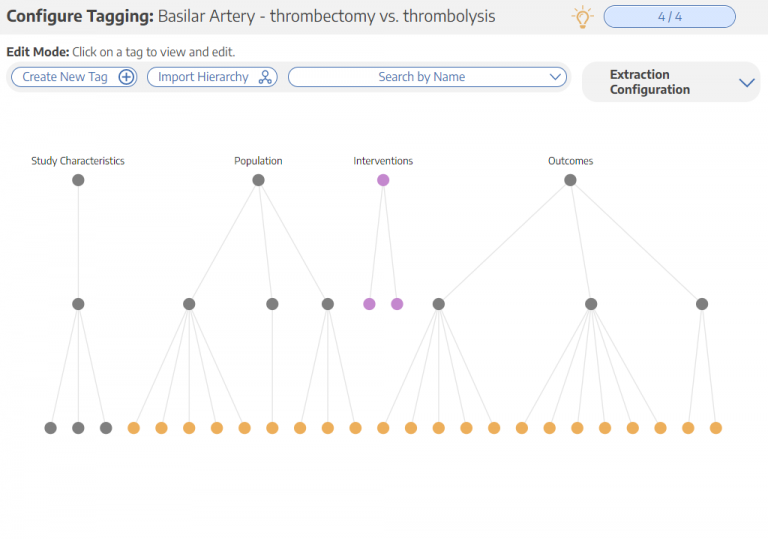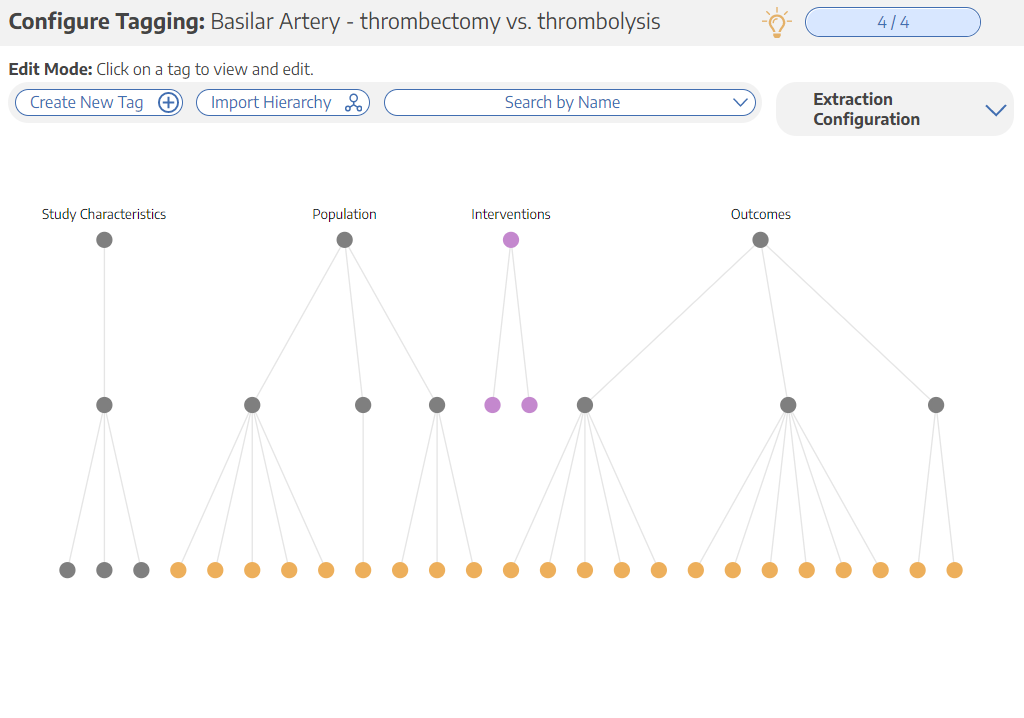

December 6, 2022
How Nested Knowledge users harmonize data, structure study content, and build expert knowledge into the platform.
When reviewing the medical literature, the general set of steps are usually constructed as:
At Nested Knowledge, we offer AI-assisted Search strategy and Screening in multiple modes to get you through steps 1 and 2 above. However, we recognize that the success of a project depends on whether the study design is reflected in the concepts extracted from underlying studies. Therefore, for step 3 we have built out a unique feature offering: customized, template-driven Tagging Hierarchies.
What is a Tagging Hierarchy?
Tagging hierarchies are a well-studied method of organizing concepts for collaborative research. The goal of a hierarchy, when compared to ‘flat’ tags, is to show both (1) connections between concepts and (2) structural organization. By layering category tags, such as “Patient Characteristics”, over specific ‘child’ tags, such as “Age (Median)”, users both establish a link between Patient Characteristics and Age, and also identify the former as the category and the latter as the concept of interest.
When this practice is generalized across a study design, the tagging hierarchy becomes the method for categorizing and showing relationships among concepts. For example, in our Tagging Configuration page (shown below for the Basilar Artery Stroke review published by a collaboration led by Stanford neurosurgeons), a typical hierarchy may include general categories such as:

What are the advantages of Tagging Hierarchies?
Tagging Hierarchies have several advantages over ‘flat’ tags, and Nested Knowledge has built on top of this to provide additional, unique capabilities in the review process:
How does the Hierarchy help with quantitative analysis?
On top of the advantages of Tagging Hierarchies for finding concepts, Nested Knowledge offers the additional benefit of employing your Hierarchy for quantitative Extraction. After you have configured and applied tags (thus creating your Qualitative Synthesis diagram to help readers drill down on concepts), we know you may move forward with meta-analysis.
Unlike any other tagging system in the systematic review universe, Nested Knowledge’s Hierarchies are also the jumping-off point for automated biostatistics. Specifically, if you build a Hierarchy that contains your Interventions of interest, and if you identify which tags are Data Elements (and the statistic type, such as “Mean with Standard Deviation”), we will automatically apply Network Meta-analytical (NMA) statistics to your dataset and visualize it in Quantitative Synthesis. Because you created the structure underlying these concepts, you can even run new NMAs on any Data Element, at any level of your Intervention Hierarchy, just by selecting them in the Quantitative Synthesis page.
How to get started?
If you are looking to get started building hierarchies in Nested Knowledge, you can get started by Signing Up on our homepage; you can even use our Demo Nests to practice hierarchy-building in a risk-free environment. If you’re already a user and want to learn more about the capabilities Tagging Hierarchies enable, you can see our Documentation for video guidance. If you run into any issues, don’t hesitate to contact our Support team for live video-conferencing support!